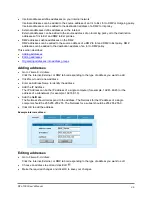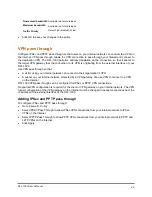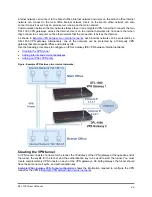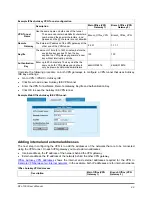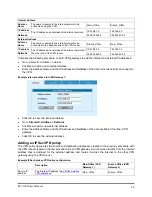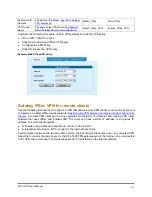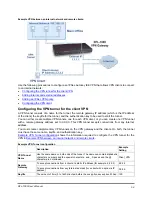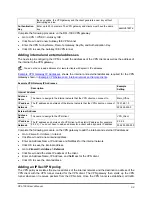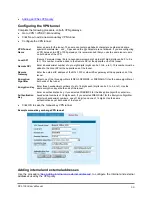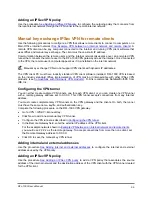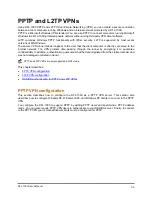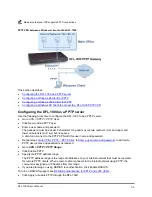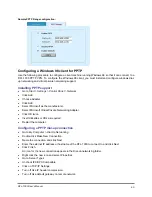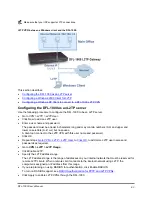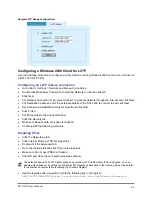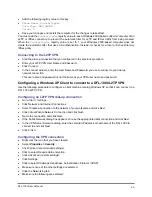
Internal Address
Address
Name
The name to assign to the internal network to be
connected using the VPN.
Main_Office Branch_Office
IP address
192.168.1.0
192.168.2.0
Netmask
The IP address and netmask of the internal network.
255.255.255.0
255.255.255.0
External Address
Address
Name
The name to assign to the internal network to be
connected to the opposite end of the VPN tunnel.
Branch_Office Main_Office
IP address
192.168.2.0
192.168.1.0
Netmask
The IP address and netmask of the internal network at
the other end of the VPN tunnel.
255.255.255.0
255.255.255.0
Complete the following procedure on both VPN gateways to add the internal and external IP addresses:
•
Go to
Firewall > Address > Internal
.
•
Click New to add a new internal address.
•
Enter the Address Name and the IP Address and NetMask of the internal network that can connect to
the VPN.
Example internal address for VPN Gateway 1:
•
Click OK to save the internal address.
•
Go to
Firewall > Address > External
.
•
Click New to add a new external address.
•
Enter the Address Name and the IP Address and NetMask of the network behind the other VPN
gateway.
•
Click OK to save the external address.
Adding an IPSec VPN policy
The VPN policy associates the source and destination addresses created in the previous procedure with
the VPN tunnel created in the first procedure. Each VPN gateway then receives all traffic from the internal
address that is destined for the external address and routes it across the Internet to the other VPN
gateway using the VPN tunnel.
Example IPSec Autokey VPN policy configuration
Description
Main Office (VPN
Gateway 1)
Branch Office (VPN
Gateway 2)
Source IP
address
).
Main_Office Branch_Office
DFL-1000 User’s Manual
50

